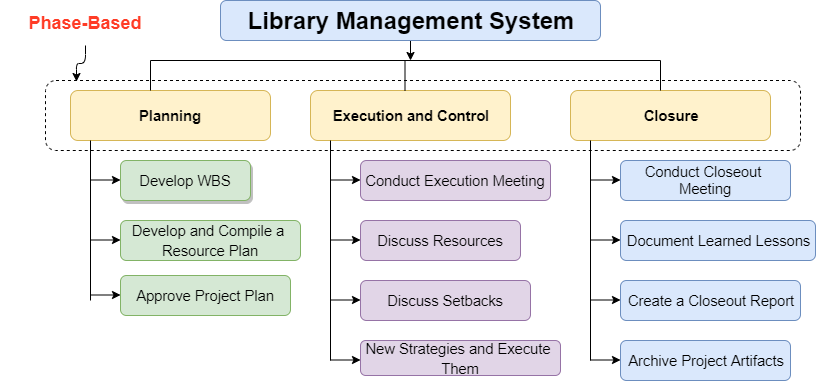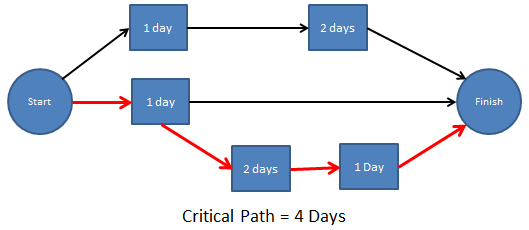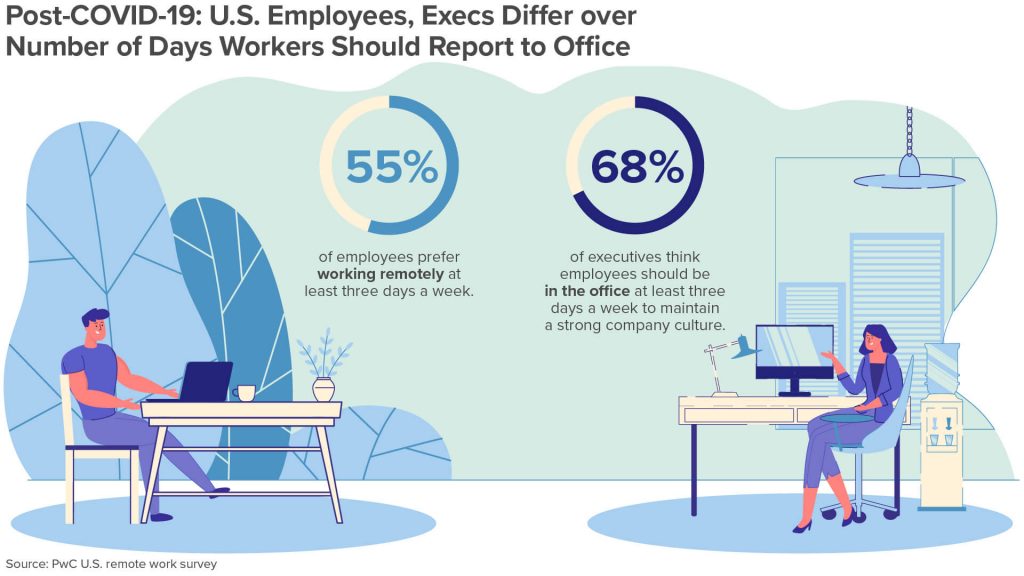
6 Interesting Project Management Ideas To Follow in 2026
Constantly changing digital technology has a strong impact on project management. It transformed the whole thing with a new structure. People now handle large and complex projects ensuring better collaboration among extended team members. But how do they actually manage everything so smoothly?
Despite the availability of expert hands and useful tools, businesses are still facing many day-to-day project management challenges and issues. According to a report, 80% of businesses waste at least half of their time reworking projects. It happens mostly for knowledge gaps or less involvement with the latest trends.
Getting to the point, today we will talk over some latest project management ideas and upcoming trends so you can lead in the future.
Meanwhile, you can check our expert editorial pick for Best Project Management Books to Take Inspiration From.
Let's start with 6 most popular ways to organize your project activities with great expertise:
Top 6 Project Management Ideas to Meet Your Goals
- Apply WBS to Split Your Project Into Smaller Manageable Task
- Use Gantt Chart to Visualize Your Project Workflow & Progress
- Evaluate PERT Methodology for More Realistic Time Estimation
- Determine Task Dependency Using the Critical Path Method (CPM)
- Ensure Iterative Development With Agile Project Management (APM)
- Handle Complex Projects With Effective Project Management Tools
There are a lot of project management techniques, tools, and other resources floating on the internet. But each one is not fit with your project's structure- finding out the right one is challenging. Sometimes one technique that works best for others may not give you even the least return.
Moreover, modern projects include multiple moving parts, levels of priority, many departments, working parameters, and others.
It is the job of project managers to align all these things and provide final deliverables within a limited timescale and budget.
Below are the points that give you details about the latest project management ideas and techniques you can apply for your business growth-
01. Apply WBS to Split Your Project Into Smaller Manageable Task
Work Breakdown Structure (WBS) is a hierarchical and deliverable-oriented deconstruction of a project. It helps project managers to break down a complex task into small sub-tasks until reach the point where they can no longer subdivide the tasks.
This project management format is popular nowadays to simplify a complex working process and define an associated person to accomplish the job. Instead of going here and there everyone has the plan in hand and knows what to do, when, and how.
Moreover, setting the priority level makes it easier to streamline all the tasks and maintain the workflow. There are two types of WBS:
A. Deliverable-Based Work Breakdown Structure: It clearly shows you the relationship between the project deliverables such as products, services, or outputs, and available options like work to be executed.

B. Phase-Based Work Breakdown Structure: In this structure, you have to define project activities clearly to minimize errors at each phase. Errors in phase one can disturb the progress of the next one.

There is another type of WBS structure called Responsibility-based Structure which deals with the distribution of project activities among the departments according to their responsibilities. However, the most popular and preferred approach is the Deliverable-Based approach.
Why you should use Work Breakdown Structure in project management?
The WBS is a laser-focused breakdown of all the key deliverables required to make your project successful. In return, the project manager gets a graphical view of all the elements a project needs to accomplish, organized into multiple levels.
02. Use Gantt Chart to Visualize Your Project Workflow & Progress
Inside a big project, managers need to control a large number of activities and ensure that all the tasks follow the schedule. It's really difficult to keep an eye on all of them and achieve all the goals. If there creates any gap, it could impact your whole project.
You can easily overcome this difficulty by having a visual representation of the workflow that tells you when each activity needs to be completed. Gantt charts help managers for planning and scheduling projects.
A Gantt chart is a type of bar chart that illustrates project tasks scheduled over time. It shows the overall project status including allocated time duration and progress of a project schedule in one simple stacked bar chart.
This means you and your team members can easily identify task dependency, set the time frame, and assign the right people to each task. Most importantly you can get into the detailed view of your project and progress report whenever you want. And forward it to your higher authority or investors.

For a Gantt chart, the vertical axis displays the tasks that need to be finished, and the horizontal axis tells the project timeline. You can include here tasks, their start-finish dates, associated team members, and the critical path of your project. If you're using any project management tool incorporated with the Gantt chart all you need to add tasks that will automatically update the Gantt chart.
Why you should use Gantt Chart in project management?
Gantt chart demonstrates all the tasks of a project and their order, shown against a timescale. Therefore you get a quick glimpse of the entire project, its associated tasks, and their deadlines at any time. Tweaking the differences at the right time can ensure the proper delivery of a project on time.
For a better understanding check this exclusive post on the Benefits of the Gantt Chart in Project Management.
03. Evaluate PERT Methodology for More Realistic Time Estimation
Program Evaluation Review Technique is a project management planning tool. You can use it to identify the time it takes to finish a particular task or activity. It provides a graphical representation of your project's timeline. With this framework, you can estimate the time it will take to complete each task in a project.
A complex project usually has several parts and a number of individual goals to accomplish, to reach the final destination. PERT planning tool assists project managers calculate time duration and approximate cost while planning for a specific type of project.
A PERT chart has circles and rectangles called nodes. These nodes represent project events or milestones. They are linked by vectors, or lines, that represent various events within a project.
U.S. Navy's Special Projects Office first introduced PERT charts in 1957 to outline the Polaris nuclear submarine project. Now project managers widely use this technique to develop a project budget and allocate the required resources to complete the project successfully. It allows you to consider all the facts according to the project acceptance criteria within predefined parameters.

PERT analysis combines data and information from different departments. It improves team collaboration by distributing related responsibilities across the organization. Finally, it helps project managers consider task flow and milestones to select the most efficient and useful project path.
Why you should use PERT in project management?
PERT chart helps project managers evaluate the time and resources necessary to manage a project. It allows them to analyze all the possible paths and strategies. So they can pick the right one to complete a project cost-effectively with minimal errors.
04. Determine Task Dependency Using the Critical Path Method (CPM)
Critical Path Method is a project modeling methodology for scheduling a set of project activities. Project managers use it to identify tasks that are necessary for project completion.
This project management tool includes the longest sequence of activities that you must complete on time to deliver the entire project in the agreed time frame. A delay in any critical task will delay the rest of the project.
In order to develop a CMP model for your project, you must create a list of all the tasks, identify task dependencies, and estimate the time duration for each task completion. Once you get the idea you can determine the critical path with the longest stretch of dependent activities considering related resources.
This algorithm is effective at different stages of project management, from initial planning or analyzing of alternative programs, to scheduling and monitoring the tasks that comprise a project.

The CMP model is usually used for complex but practically predictable projects. It was introduced for the first time in late 1950 to resolve the issue of extra costs caused by inefficient scheduling. Since then, project managers use it for planning projects and prioritizing tasks. Using this technique you can divide a complex project into individual tasks and measure project flexibility for better decision making.
Why you should use CMP in your project management?
The Critical Path Method refers to the critical path of a schedule. CMP provides workable data about how to plan projects, allocate resources, and schedule tasks. It enables project managers to pick the optimum schedule considering project costs for various completion dates.
05. Ensure Iterative Development With Agile Project Management (APM)

Agile project management is a flexible way to build a project structure by breaking it into several stages or sprints. A large number of businesses adopt agile and 98% of them get success in project completion on time. This is the reason 71% of companies have started using different Agile approaches inside their projects.
To carry out a project, especially a complex one, you need to break it into more manageable tasks. The agile methodology consists of several small circles or sprints. Throughout the journey, it involves continuous improvement in the development of a product or service.
It helps you create shorter development cycles and ensure more frequent product releases. This is much more advanced than traditional waterfall project management. Also, team members get time to bring necessary changes based on clients' feedback more effectively.
The two popular and most used Agile frameworks are – Scrum and Kanban. But each Agile methodology has the same execution steps which include: sprint planning, developing products, testing, delivering iteration, incorporating feedback, etc.
People mainly leverage this iterative approach for managing software development projects. These types of projects need continuous releases and need to incorporate customer feedback with every iteration. By applying APM many software teams notice a remarkable boost in their development speed and mutual collaboration. Plus it increases their ability to quickly respond to market trends.
Other teams who work closely with customers and other external parties throughout a project can leverage different Agile frameworks to develop new products in uncertain environments. Such as marketers, universities, the military, the automotive industry, and so forth.
Why you should use APM in your project management?
Agile methodology has the aim to bring quick changes and flexibility inside businesses. IT teams use the Agile approach to project management for delivering error-free products. People from other industries can also benefit from Agile project management to make profits through continuous iteration.
06. Handle Complex Project Management Tasks With Effective Project Management Tools

Technology has already taken many responsibilities of human beings. It simplifies project management tasks too. There are a number of useful software focusing on different project management techniques.
Project management tools allow you to manage and monitor project activities from a centralized hub using tasks, subtasks, progress reports, schedules, workflows, etc. Also, it ensures better team collaboration by incorporating helpful functions like assigning tasks, adding comments, email notifications, and others.
Apart from these, you will get instant insight into what's actually going on inside a project. If you have every single update in front of your eyes you can take quick actions where required.
Even in the drastic change of working format- from a physical office to remote work, project management tools provide tremendous support to team members. It is an effective way to connect all your remote employees on a common platform. And most importantly let them communicate in real-time.
However, the way every technique is not perfect for your business, and every tool can't serve your purpose. You must have the capability to understand your project need and select the right tool.
Why you should use advanced tools in your project management?
Project management tools help team members store and share all their project-related data in one place. So, they get easy access to required information, track their progress, and collaborate if requires. On the other hand, project managers have a strong grip over all the activities to lead a successful project.
Read More: 8 Best Marketing Project Management Software
Project Management Trends That Will Lead in the Near Future
Here are the most important project management trends of 2026 and beyond-
1. Hybrid Work Model Likely to Be New Norm
The global pandemic has changed the working procedure globally. Before the pandemic, Americans spent 5% of their working time at home but now this figure is roughly 60%. Companies also find a significant boost in productivity by adopting a hybrid work model.
This scenario increases the responsibilities of project managers. Now they have to manage and distribute work among in-house team members and remote co-workers. Maintaining collaboration across the team becomes more challenging for the leaders.
To simply your job utilize a common platform to connect all your team members embracing modern project management techniques.
Also Read: How to Manage Your Remote Team Smartly With WP Project Manager Pro & Zoom to Ensure Best Result
2. Organizations are Shifting to Agile Approach
A report from 2018 shows that projects using Agile methodologies are 28% more successful and almost 71% of companies use Agile with varying frequencies. This trend is still going on. Besides the software industry, other sectors are also turning towards Agile practices.
Agile tools are also introducing more user-friendly interfaces to eliminate the complexity of main functionalities. Such as Kanban dashboards, task backlogs, and issue trackers.
Scaled Agile Framework (SAFe) and Scrum are the most popular Agile frameworks. These are evidently working for team productivity at different levels of the organization. Plus integration of Artificial Intelligence (AI) and Machine Learning (ML) in Agile methodology allows you to make assertive and timely decisions.
An important ceremony in Agile Scrum is the “Sprint Planning Meeting“. Check out this guide to learn:- How to Conduct a Sprint Planning Meeting to Ensure Your Business Success
3. Increasing Demand for Project Management Tools and Professionals

According to a new report by PMI, 2.3 million project managers are needed to perform specific roles inside an organization. People with project management-oriented skills are now in high demand.
The role of a project manager is full of challenges. S/he needs to control all the project tasks, collaborate with team members, monitor every time, and fill up the gaps to ensure that the project reaches its destination within the agreed time and budget.
Also, project managers should have strong leadership skills. This characteristic leads them to build a flexible workspace where a team can effectively share ideas, come up with new plans, and complete the project successfully. On the other hand, the use of project management tools is also booming with technological advancement.
4. Greater Emphasis on Soft Skills
Soft skills have always been important for the project management domain. But now it is more essential than anything ever. Generally, the value of a project manager depends on his/her academic achievements and skills to apply different project management techniques.
But the latest technology and AI-powered programs normalize many complicated tasks related to managing projects and team members. Now project managers have time to focus on their other responsibilities and this is where soft skill becomes necessary.
According to PMI, here are the seven most important soft skills for project managers:
- Communication
- Conflict management
- Decision-making
- Leadership
- Motivation
- Organization
- Trust-building
Project managers should emphasize developing their soft skills. So they can add more value to their organizations.
5. The Impact of Artificial Intelligence And Automation

In this modern age gradually everything is controlled by AI technology. Because it allows leaders to better understand their users and make more realistic decisions. Project managers have already started using AI to manage their projects and organize day-to-day tasks.
It minimizes human efforts through automation and provides better insights into analyzing data. Also, project managers are taking the help of AI automation to perform complex tasks like task allocation and data visualization.
Using AI in project management increases the likelihood of project success. Managers embrace this technology to make realistic predictions, optimize resource scheduling, enable data visualization, and do risk analysis. It's also beneficial for the right estimation of a project's duration, costs, and progress.
6. Rising Demand for Cloud-Based Technology
Cloud-based solutions are now at the peak of demand. An increasing number of organizations use cloud-based management software to store and manage their data. According to a report, more than 60% of businesses utilize cloud technology over the globe.
A cloud-based project management software allows project managers and teams to store all project data, documents, and programs in a centralized hub. This hub is safe and always synced across devices.
You and your team member will get easy access to project data and a real-time view of work status. No matter if team members are staying in different parts of the world.
Will Hybrid Work Structure Rule the Future of the Business World?
Hybrid working has been around for a quite long time. But, as the Covid-19 crisis kicked in, companies from around the world began to adjust to this new approach. Later employers realized that employees could be more productive and focused when not in the office.
Also, it lessens location dependency and saves money for both employees and employers. Considering these facts, experts have predicted that the hybrid model is the future for the post-Covid world.
The hybrid work model represents an organizational structure combining remote work with office work. This means companies allow some employees to work remotely while others work on-premises.
A recent survey showed that 55% of US workers prefer a mixture of home and office working. In the UK, employers expect the proportion of regular home workers to double, from 18% pre-pandemic to 37% post-pandemic. China employment expert Alicia Tung has said that in 10 years time, there will be a 60/40 split of onsite/remote work.
In a hybrid work structure, people have the flexibility to choose whether they prefer an in-house office environment or work remotely from anywhere. There is another type of hybrid model where remote employees need to work from office premises on certain days of every week.
It mostly happens in companies that handle extremely complex projects and needs more team collaboration. In that case, all your employees must be situated locally.

However, an efficient hybrid workplace shouldn't expect everyone works the same hours, at the same pace. Rather you can use project management & scheduling tools to help your geographically-distant employees stay on track.
As a project manager, you must understand the entire system so you can establish an optimized working environment for successful project completion.
Read a Project Success Story with WP Project Manager Pro.
New Ways to Stay Ahead with Top Project Management Ideas
Over the last few years, technological, social, and market evolutions have changed the project management landscape dramatically. Perhaps developing a project roadmap helps you visualize what needs to be done to reach your final goal.
Things to consider when applying a new Project Management idea include:
- Investing in the right project management idea
- Weighing up the costs
- Collecting feedback from team members
- Encouraging open communication
- Introducing helpful resources and policies
By getting ahead of the current position, you should work with new technology to bring out the best in your existing employees. The above project management ideas help you develop a work environment where all members feel connected and invest in the right work models.
However, you can use a combination of processes and templates from multiple methodologies. Or implement a solid project management tool like WP Project Manager that incorporates your team's overall project process. And in case you have your existing key business departments like HR, CR, and Accounting to manage then you can simply integrate it with WP ERP- A complete business management solution to make your daily task more streamlined than ever.
Do you have any further queries or suggestions about any new project management techniques or tools? Do share your views in the comments below.